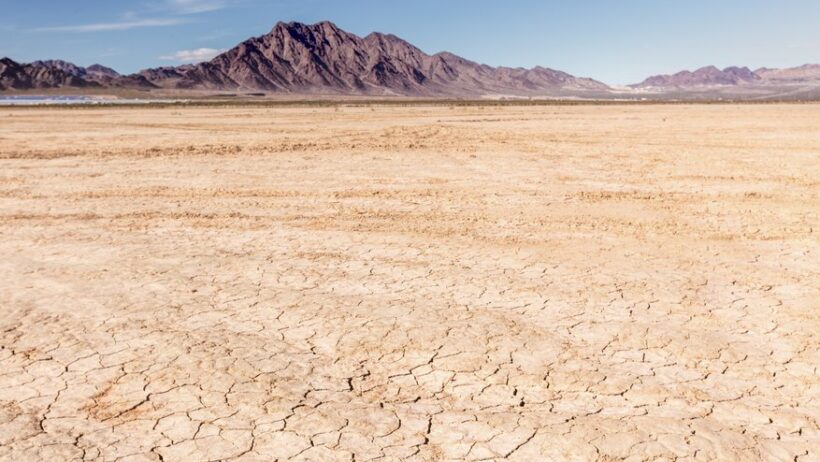When we conjure images of a dry climate, oftentimes thoughts drift toward barren landscapes, dust-storms, and desolation. Yet, it is paramount to recalibrate this narrative. A dry climate does not simply denote unyielding aridity; it encompasses a complex system of ecological, climatic, and human interrelations that shape unique flora and fauna as well as profound cultural adaptations.
Understanding a dry climate—characterized by low annual precipitation—calls for a closer examination of its geographical and environmental implications. In terms of classifications, dry climates are primarily categorized into arid and semi-arid regions. Arid zones receive less than 10 inches (250 mm) of rainfall yearly, while semi-arid regions may enjoy slightly more, albeit still insufficient to support a lush ecosystem. These areas are found predominantly along the tropics, deserts, and interior continental regions, laying bare a captivating tapestry of environmental variability.
One may ponder: WHERE can we find these abbreviations of aridity? The Aral Sea region, with its poignant history of ecological disaster, offers a stark representation of human impact within a dry climate. In the Middle East, the Arabian Peninsula exemplifies a classic arid environment, with vast stretches of sand dunes interspersed with oases, fostering limited yet remarkable biodiversity. The southwestern United States showcases the Mojave and Sonoran deserts, where life thrives in spite of natural limitations. Each locale tells a unique story of adaptation and resilience.
As we delve deeper into the defining characteristics of dry climates, certain noteworthy factors emerge. First, desiccation impacts not just plants but entire ecosystems. Flora here has adapted through specialized mechanisms; cacti, for example, engage in crassulacean acid metabolism (CAM) to reduce water loss. Furthermore, xerophytes, or drought-resistant plants, display a suite of adaptations ranging from deep root systems to waxy leaf coatings. This phenomenon is intricately tied to human endeavors: especially in agriculture, dry climates present both challenges and opportunities for innovative practices such as drip irrigation and the cultivation of drought-resistant crops.
On the fauna front, the fauna of dry climates displays exceptional ingenuity. Creatures like kangaroo rats and desert tortoises have evolved to thrive in conditions that would spell doom for lesser species. Adaptations such as nocturnal behavior and physiological drought resistance provide these organisms with the ability to survive in extreme conditions. It is a testament to how evolution favors ingenuity, urging us to reconsider our perspectives on survival amid adversity.
Moreover, dry climates can stimulate robust socio-economic developments. Water scarcity drives technological advancements. Cities like Las Vegas, built within arid landscapes, push the boundaries of resource management through innovations in water conservation. Urbanization in these climates also often brings forth unique architectural styles, incorporating features like thermal mass to mitigate extreme temperature fluctuations. Furthermore, these environments pose intriguing opportunities for tourism, with their striking landscapes and cultural heritage attracting millions of visitors seeking to experience the paradox of arid beauty.
Nevertheless, it would be remiss to overlook the significant challenges posed by dry climates amid the growing specter of climate change. The exacerbation of aridity threatens biodiversity, signaling alarm bells for already fragile ecosystems. Desertification—an increasing concern driven by unsustainable agricultural practices and deforestation—compounds socioeconomic vulnerabilities and exacerbates food security issues. The interdependence between climate health and human prosperity cannot be overstated.
Initiatives promoting sustainable practices must gain momentum. Methods including agroforestry, organic farming, and rainwater harvesting must be prioritized, aiming to restore balance to these ecosystems while fostering economic resilience. Community-driven approaches can empower individuals to mitigate the human impact typically associated with dry climates, forcing a reevaluation of agricultural paradigms that currently prioritize short-term yields over long-term viability.
Understanding dry climates also involves examining the cultural dynamics that flourish within them. Populations inhabiting these regions often exhibit deep connections to the land, preserving ancestral knowledge around resource management and sustainability. Innovations stemming from traditional ecological knowledge can provide solutions rooted in time-tested practices, merging the wisdom of past generations with contemporary challenges.
As curiosity about earth’s climatic diversity deepens, it is crucial to engage with the intricacies of dry climates. Shifting our perspective can illuminate their inherent value, not simply as barren terrains but as vibrant ecosystems filled with both challenges and opportunities. Each dry climate holds a mirror to humanity’s relentless struggle for survival and ingenuity, demanding adaptation as we navigate the complex web of environmental interplay.
In conclusion, a dry climate is not merely a geographical phenomenon but a rich tapestry woven with resilience, adaptability, and ingenuity. The narrative surrounding these regions must change; no longer should we view them solely as arid landscapes, but rather as remarkable examples of life’s persistence. Exploring the dynamics of dry climates offers invaluable insight into how we can cage our aspirations for sustainability, underpinning the interconnectedness of all ecosystems. The future beckons us to approach these environments with thoughtful engagement, ensuring our footprints leave behind not just depletion, but rejuvenation and restoration.








